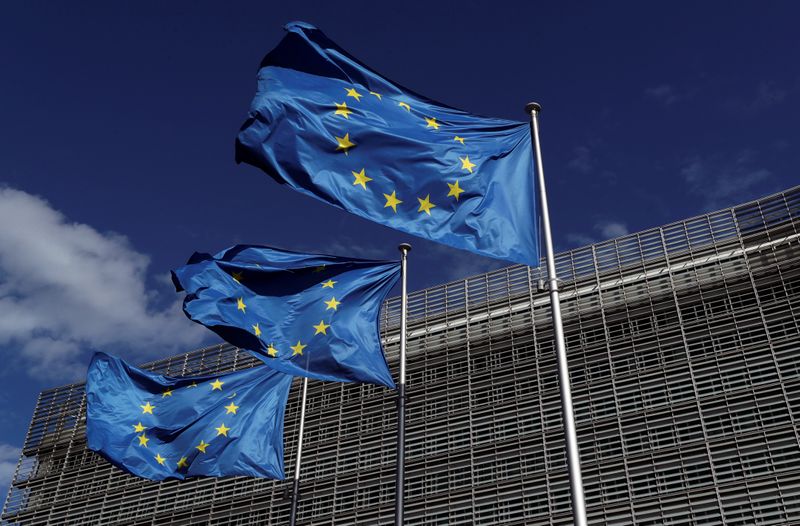By Kate Abnett
BRUSSELS (Reuters) - A European Union plan to cut greenhouse gas emissions to 55% below 1990 levels by 2030 is technically and economically possible, researchers said on Monday.
The European Commission will next month propose a tougher EU climate goal for 2030, to steer the bloc towards its flagship target of net zero emissions by 2050, down from the nearly 4 billion tonnes of carbon dioxide equivalent it currently emits annually.
The Commission will propose a 50% or a 55% emissions reduction for 2030 - up from an existing 40% goal. It would set the stage for planned EU reforms on tax, energy policy and the carbon market next year.
"Achieving a 55% target is possible," German-based think tank Agora Energiewende executive director Patrick Graichen told Reuters. "And if it is feasible, why wouldn't we go for it?"
In analysis published on Monday, Agora Energiewende and the German research centre Oeko Institut lay out how the EU could revamp its climate policies to deliver the goal.
The EU carbon market, which covers emissions from power plants, industry and European flights, has the greatest potential to cut emissions quickly.
To deliver the 55% target, the researchers said emissions covered by the Emissions Trading System (ETS) should fall to 61% below 2005 levels, a much deeper cut than the 43% reduction the carbon market is designed to deliver by 2030.
That would require reforms to the carbon market, including reducing its cap on emissions by up to 5.4% annually from 2025, compared with the 2.2% reduction rate currently planned.
EU countries, which must approve the new climate target, are divided. Western and Nordic countries back the more ambitious level and eastern nations refuse to consider bigger cuts before seeing an assessment of the costs.
The researchers said there is "no credible pathway" towards a 55% target for 2030 without a bigger contribution from states such as Poland and Czech Republic that say the economic fallout from the COVID-19 pandemic will make climate goals more challenging.
To help low-income countries, the EU should earmark funds in its next budget for local building renovations and electric vehicle charging infrastructure, the reseachers said.

Another option would be an EU-wide system of auctioning emissions permits for sectors not covered by the carbon market, with proceeds channelled to poorer states.